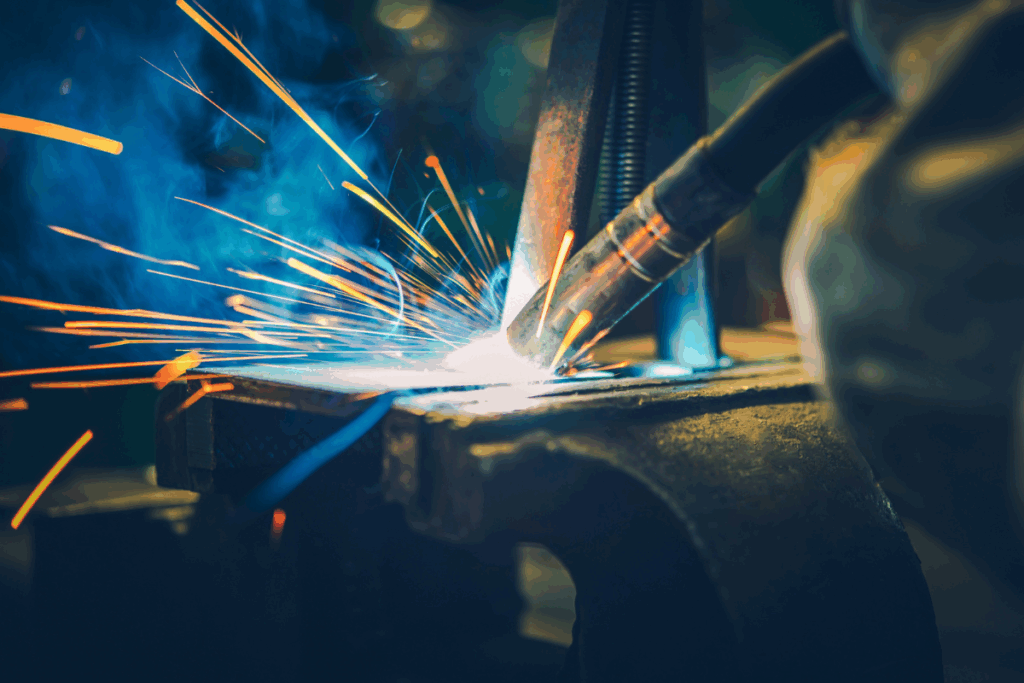When it comes to machining and fabricating high-quality parts, components, and projects, not all source materials are created equal.
In fact, deciding which material is best for your application is a crucial step in ensuring your end products operate efficiently. Fortunately, a wide selection of metals are available to choose from.
However, having so many options can also make the selection process confusing and frustrating.
The good news is that you don’t need a bachelor’s degree in metallurgy to make an informed decision. As a leading CNC machined components supplier, Arrow Off-Road delivers the experience and skills required to make knowledgeable recommendations and work with all types of metals and their alloys, including best practices on their extraction, processing, and application in various industries.
Starting The Material Selection Process
Choosing the right materials starts with a conversation to learn about all the parts and components of your project, including how you’ll use them and the type of environment they’ll be used in, to determine their mechanical and thermal requirements. We also take note of any desired surface finishes and aesthetics required to ensure the parts deliver the look and functionality you need.
Budget is also a significant consideration during the material selection phase, allowing us to determine cost-conscious options that won’t compromise performance and reliability.
The information we gather during these collaborative discussions helps our team narrow the vast list of material options to a select few. This list can be further refined based on what is most important to you in the finished product.
Important Fabrication Factors That Drive Material Choice
Many people believe that the final application is truly what drives material choice. However, equally important is how easy the material is to work with and which resources are required for processing during the machining and fabrication phases.
For example, harder materials, such as stainless steel and titanium, require more time for cutting, drilling, and shaping, and incur additional costs due to tool wear and breakage. Aluminum, brass, and other softer materials are easier to machine and offer smoother surfaces, however, they don’t have comparable weight tolerances that heavy steel can. The additional costs associated with using heavier materials can be justified if the final application requires strength under pressure.
Weldability is another factor that can influence material choice. Compatible materials must be selected during the planning stage to prevent production delays and cost overruns. Examples of incompatible materials include attempting to join aluminum and steel or welding steel and titanium – it cannot be done successfully.
Many parts and components require a smooth surface finish to minimize friction, improving the performance and lifespan of the part. Aluminum and copper are easy to fabricate and offer ideal surface finishes. Titanium is another option, but it requires specialized techniques to achieve a smooth finish, which can impact the budget.
If aesthetics is essential to the finished part, the selected material should have properties that make it easy to polish, coat, and paint during the finishing phase of the fabrication process. In many cases, stainless steel is the preferred choice for custom finishes.
Material Selection Considerations Based On The Product’s Application
Of course, machinability is just part of the material selection process. Ensuring efficient, reliable, and safe performance in the field also significantly influences the choice of materials for the project.
For example, will the part be subject to harsh or extreme temperature environments? If so, nickel, stainless steel, and certain types of ceramics will be excellent choices due to their superior heat-resistant properties. For parts that require reliable thermal conductivity, steel, titanium, and magnesium are well-known for their ability to transfer heat efficiently.
Some components are required to conduct electricity. Brass and copper can easily allow an electrical current to flow through them, making them excellent choices for this application.
Off-road vehicles also require exceptional materials to withstand harsh outdoor environments. Defence products and protection equipment, in particular, must be constructed with materials that can efficiently dissipate kinetic energy upon impact. Materials such as ceramics and titanium offer superior impact resistance for applications that demand it.
If the product is involved with harsh chemicals, metal, ceramics, plastics, glass, and their composites provide excellent chemical resistance. Metal and glass are also non-combustible, delivering high-quality flame resistance.
To combat damage caused by extreme temperatures, corrosion, or other environmental factors in outdoor applications, stainless steel and titanium are often the recommended choices.
Read More: Arrow Off Road’s Quality Certifications Explained
Make The Best Material Choices With The Experts At Arrow Off-Road
Material selection can be a daunting task, unless you have the right fabrication partners in your corner. Trust the experts at Arrow Off-Road to make the best material recommendations that fit your product application and budget.
With over 100 years of design, metalworking, and assembly experience, we’re the only manufacturing partners you’ll ever need for high-quality off-road products that exceed your expectations.
Read More: Inside AOR’s Complete Fabrication Process
Arrow Off-Road: CNC Machine Manufacturers In Canada Delivering Quality Solutions To Global OEMs
Partner with Arrow Off-Road for precise machining, welding, and fabrication solutions customized to your requirements and application. Quickly request a quote for your next project to experience the Arrow difference in quality, precision, and service for yourself. Get in touch with us today!
